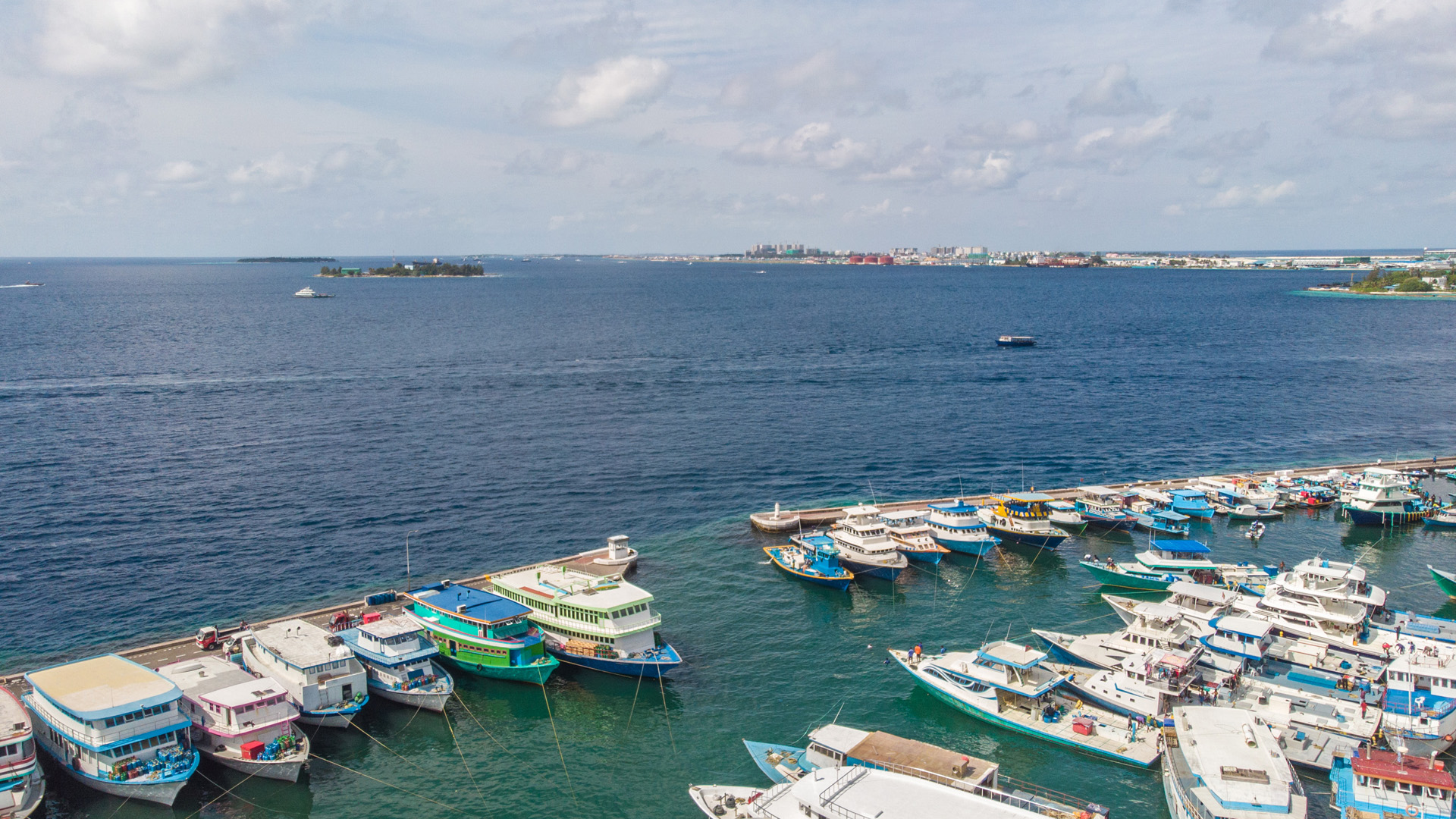Tackling the Solid Waste Management Challenge in Maldives
Maldives’ natural beauty and amenities beckon tourists worldwide to enjoy its idyllic setting. But behind the scenes, over 800 tons of municipal solid waste is generated every day from the Greater Malé region and 32 inhabited outer islands, including 86 tourist resorts. Because of the lack of treatment facilities, the wastes were collected and openly dumped on Thilafushi island. With no control measures, the wastes generate leachate and fires on the site. Plumes of smoke visible from Malé, the international airport, and nearby resorts compromised air quality. They posed a nuisance to residents and tourists, while leachate and plastics contaminate the surrounding marine environment. These threatened tourism and fisheries, which rely heavily on the country’s pristine environment and are cornerstones of Maldives’ economy.
The situation at the dumpsite has improved, with help from an ADB technical assistance. Fires and smoke have stopped in Thilafushi since August 2021. But a long-term solution is still needed.
The government has prioritized this issue and, through its Strategic Action Plan 2019–2023, laid out strategies for effective solid waste management. This included setting up regional waste management facilities armed with waste-to-energy (WTE) technology. To support the government’s efforts, ADB, the Asian Infrastructure Investment Bank, and Japan Fund for the Joint Crediting Mechanism approved the Greater Malé Waste-to-Energy Project. The Islamic Development Bank has also provided a $20 million loan to the project to support its rehabilitation of the Thilafushi dumpsite and a transfer station in Hulhumalé. The project complements the efforts under the Greater Malé Environmental Improvement and Waste Management Project to help provide the region with an end-to-end solid waste management system.
“With inadequate facilities and limited land available for solid waste management for the Greater Malé area, the government has made improving waste management a top priority. This project will help Maldives develop a sustainable waste management system for Greater Malé and neighboring islands, improving livability and environmental sustainability, including air quality and ocean health in the project area,” said Luca di Mario, team leader, Urban Development, ADB.
This project will help Maldives develop a sustainable waste management system for Greater Malé and neighboring islands, improving livability and environmental sustainability, including air quality and ocean health in the project area.
– Luca di Mario, ADB team leader, Urban Development
A Sustainable Waste Management System
The project is currently developing a WTE (incineration with electricity generation) treatment facility that can process 500 tons per day (tpd) of waste, from which electricity is also generated. The facility will have two treatment lines, each with a capacity of 250 tpd, an energy recovery facility, a landfill for residues, and an air pollution control system. The WTE plant and landfill will be implemented through a design-build-operate (DBO) contract with a specialized firm, which will integrate a design–build phase and a 15-year operation and maintenance phase to improve the sustainability of service delivery. This will adopt international best practices and operational and emission standards to ensure efficiency and environmental sustainability.
This facility will address the country’s two key constraints to sustainable waste management—land scarcity and lack of a waste treatment infrastructure. In addition, it will include disaster-and climate-resilient features, such as raised floor elevations, flood-proof mechanical and electrical equipment and landfill cells, and enhanced drainage systems.
Capacity Enhancement and Awareness-Raising Activities
The WTE plant is the first large-scale waste treatment facility in Maldives. As such, institutional capacity must be enhanced to manage and maintain the plant’s optimum performance. The project aims to improve the capacity of Maldives’ Ministry of Energy, Climate Change and Technology and the Environment Protection Agency. Their staff, guided by a capacity improvement plan for supervising WTE service delivery, will be trained to oversee the plant’s operation and manage the DBO contract.
The project will also conduct awareness-raising activities in communities in the Greater Malé region and its outer islands on topics such as waste-to-energy as well as reducing, reusing, and recycling waste. Through the support of the High-Level Technology Fund, ADB and Japan’s Ministry of Environment also facilitated a capacity-building exchange program for the officials of Maldives’ government to learn the best solid waste management practices, including WTE, from the Clean Authority of Tokyo.
Target Results
With the facility’s establishment, Maldives addresses several threats to its environment and economy.
The WTE plant, to be completed in 2025, will be the key to the country’s long-standing waste problem. Its operations will begin in 2026. By 2027, the project is expected to ensure that at least 80% of combustible municipal and commercial solid waste in the project area is treated, with residuals safely disposed of or recycled.
Aside from treating waste, the facility will generate at least 50,000 megawatt-hours of electricity per year by 2027, about half of which is renewable. This is much needed. Energy in islands such as Maldives is expensive and heavily reliant on fossils.
The project will also help reduce annual greenhouse gas (GHG) emissions. When it ends in 2027, the project is expected to cut GHG emissions by about 28,000 tons of CO2e a year. This will increase to an average of 40,000 tons of CO2e a year after the plant’s first year of operation. Cleaning up the local environment is an important component of Maldives’ growth strategy, which relies heavily on tourism. By improving the country’s solid waste treatment and disposal services, the project will help ensure that Maldives’ skies and seas remain clear blue—a magnet for tourists and a boon for tourism, economic growth, and jobs.
Project Details
Maldives: Greater Malé Waste-to-Energy Project
Cost
$171.6 million
- ADB Resources $73.9 million
- Government $27.7 million
Cofinancing Partners
- Asian Infrastructure Investment Bank (Loan) $40 million
- Islamic Development Bank (Loan) $20 million
- Japan Fund for the Joint Crediting Mechanism (Grant) $10 million
Dates
Approval Date 12 August 2020
Signing Date 28 September 2020
Completion Date 31 March 2027


